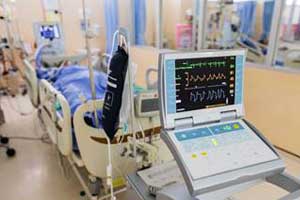- Home
- Editorial
- News
- Practice Guidelines
- Anesthesiology Guidelines
- Cancer Guidelines
- Cardiac Sciences Guidelines
- Critical Care Guidelines
- Dentistry Guidelines
- Dermatology Guidelines
- Diabetes and Endo Guidelines
- Diagnostics Guidelines
- ENT Guidelines
- Featured Practice Guidelines
- Gastroenterology Guidelines
- Geriatrics Guidelines
- Medicine Guidelines
- Nephrology Guidelines
- Neurosciences Guidelines
- Obs and Gynae Guidelines
- Ophthalmology Guidelines
- Orthopaedics Guidelines
- Paediatrics Guidelines
- Psychiatry Guidelines
- Pulmonology Guidelines
- Radiology Guidelines
- Surgery Guidelines
- Urology Guidelines
Determination of brain death- New position statement of AAN

The American Academy of Neurology (AAN) has released a new position statement in support of the development of uniform legislation on brain death. The position statement is endorsed by the American Neurological Association and the Child Neurology Society and has been published in Neurology.
Brain death is defined as the death of the individual due to irreversible loss of function of the entire brain. It is the equivalent of circulatory death, which is due to irreversible loss of function of the circulatory system, which includes the heart.
“The AAN believes that a specific, uniform standard for the determination of brain death is critically important to provide the highest quality patient-centred neurologic and end-of-life care,” said position statement author James Russell, DO, MS, of Lahey Hospital and Medical Center in Burlington, Massachusetts, an AAN fellow and chair of the AAN Ethics, Law and Humanities Committee, in a statement. “The AAN supports the development of legislation in every state modelled after the Nevada statute, which specifically defers to these current adults and pediatric brain death guidelines and any future updates.
The position statement calls for uniform adoption of these protocols across medical institutions and ts Key recommendations are:
1. The development of uniform institutional policies on brain death, in accordance with current guidelines, within all US medical facilities;
- Training programs for physicians who determine brain death;
- The creation of credentialing mechanisms for physicians, regardless of speciality, who may be involved in brain death determination;
- Institution-based policies that enforce compliance with medical standards for determining brain death;
- Increased research to further understand brain death and improve the accuracy of its determination; and
- Enhanced public and professional education about these standards
2. The position statement also supports the development of programs that train and credential physicians that determine death by neurological criteria and that provide public and professional education regarding brain death and its determination.
3. The position statement advises that should a physician be opposed to the determination of brain death or continued care of the patient, he or she should seek transfer of their responsibility to another qualified physician.
4. Physicians explicitly communicate that the patient is alive before undertaking a brain death examination; the exam should also follow a candid conversation with those responsible for the patient's care regarding the medical status and prognosis of the patient.
5. In the case where there is opposition or a request for accommodation, physicians undertake a sensitive and empathetic position in an effort to reconcile differences in a way that is satisfactory to all parties involved, included but not limited to loved ones and lawful healthcare proxies, the medical care team, and institutional leadership.
6. There is “no ethical obligation to provide medical treatment to a deceased person,” recognizing the potential for “harm to the patient, the family, or other patients and the health care team from indefinite accommodation.”
7. Death is a biological reality that may result from irreversible injury to the heart or brain and since Physicians are uniquely qualified and authorized by their training, experience, and licensure to determine that death has occurred by either a circulatory or neurologic mechanism, and are professionally obligated to make this determination in a timely and accurate manner.
For more details click on the link: DOI: https://doi.org/10.1212/WNL.0000000000006750

Disclaimer: This site is primarily intended for healthcare professionals. Any content/information on this website does not replace the advice of medical and/or health professionals and should not be construed as medical/diagnostic advice/endorsement or prescription. Use of this site is subject to our terms of use, privacy policy, advertisement policy. © 2020 Minerva Medical Treatment Pvt Ltd